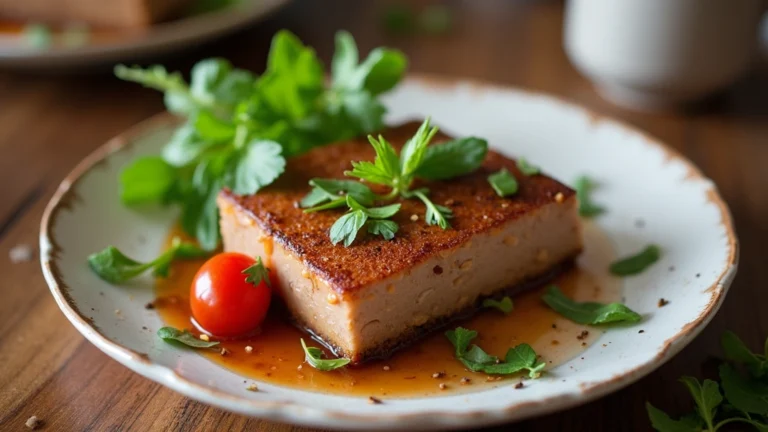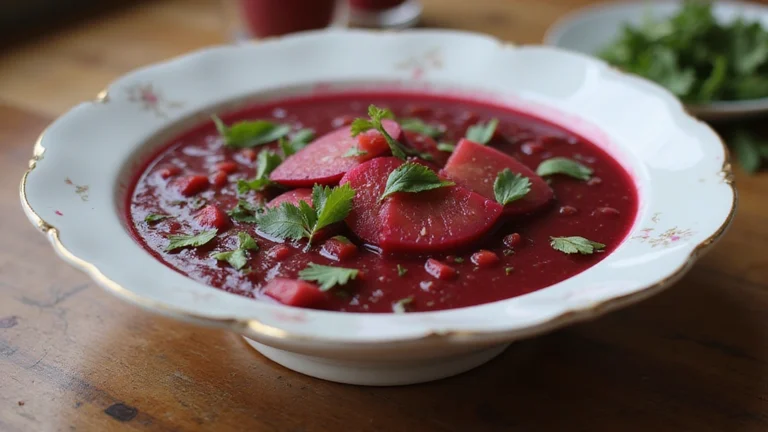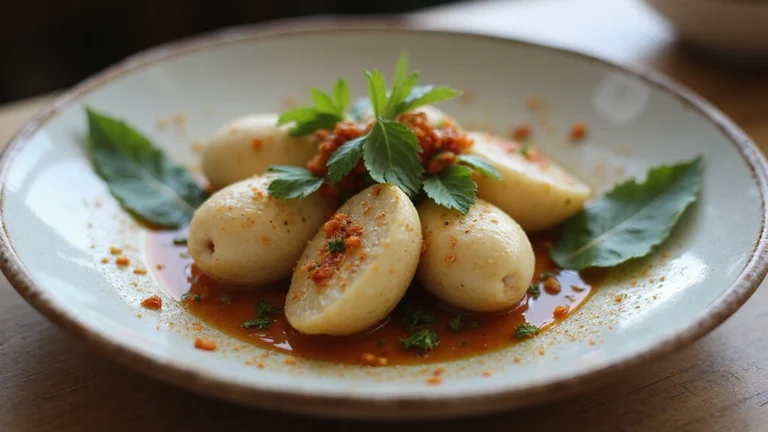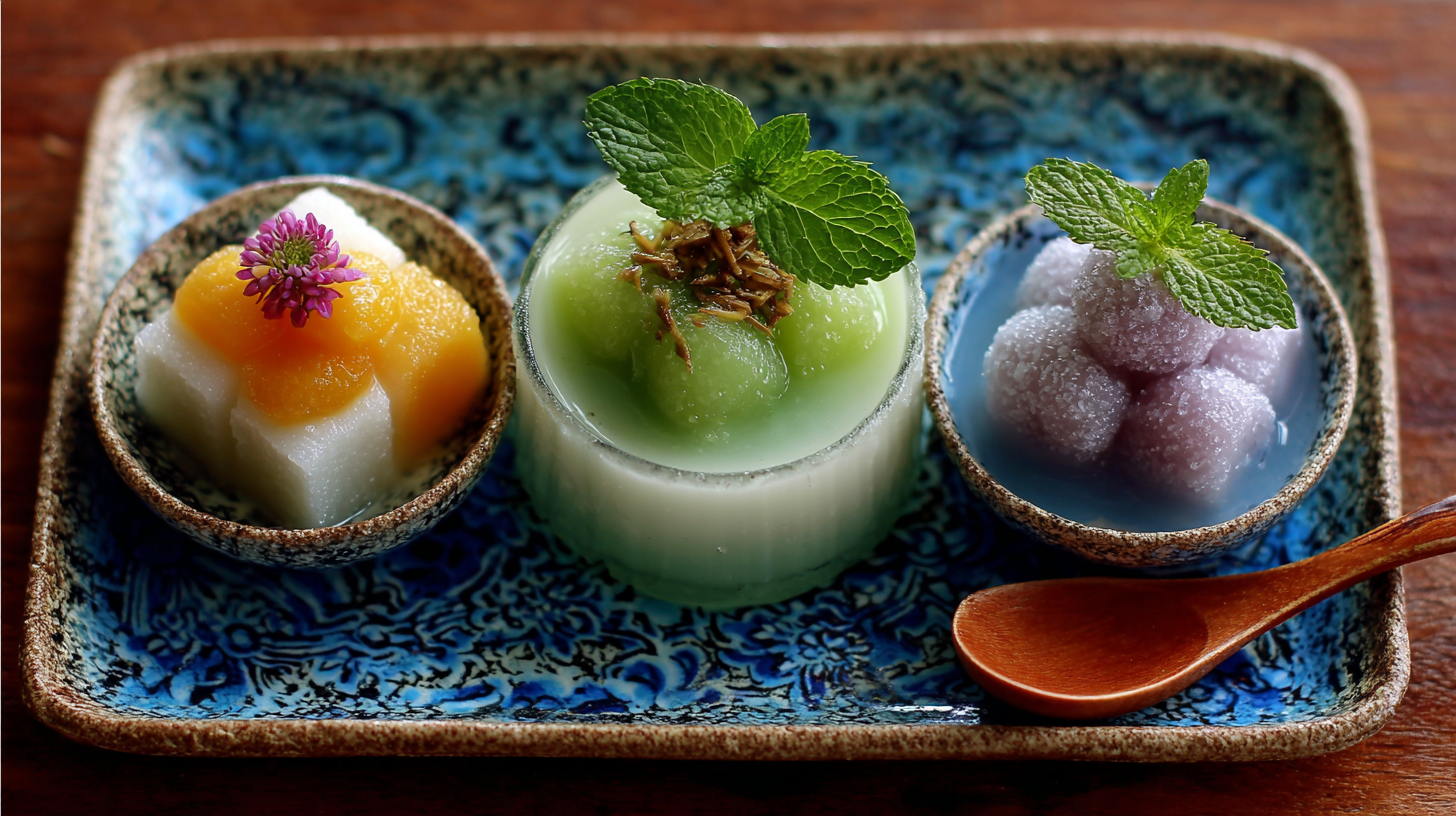
Vietnamese desserts are a delightful blend of flavors and textures that often surprise and charm us. From creamy puddings to chewy rice cakes, these sweet treats showcase the perfect harmony of tropical ingredients like coconut, pandan, and mung beans. They’re not overly sugary, making them a refreshing way to end any meal.
What we love most about Vietnamese desserts is how they reflect the country’s rich culinary heritage. Many recipes have been passed down through generations, each with its own unique twist. Whether you’re craving something cool and refreshing like chè or a warm, comforting bánh, there’s a dessert for every mood.
Vietnamese Food Recipes Dessert
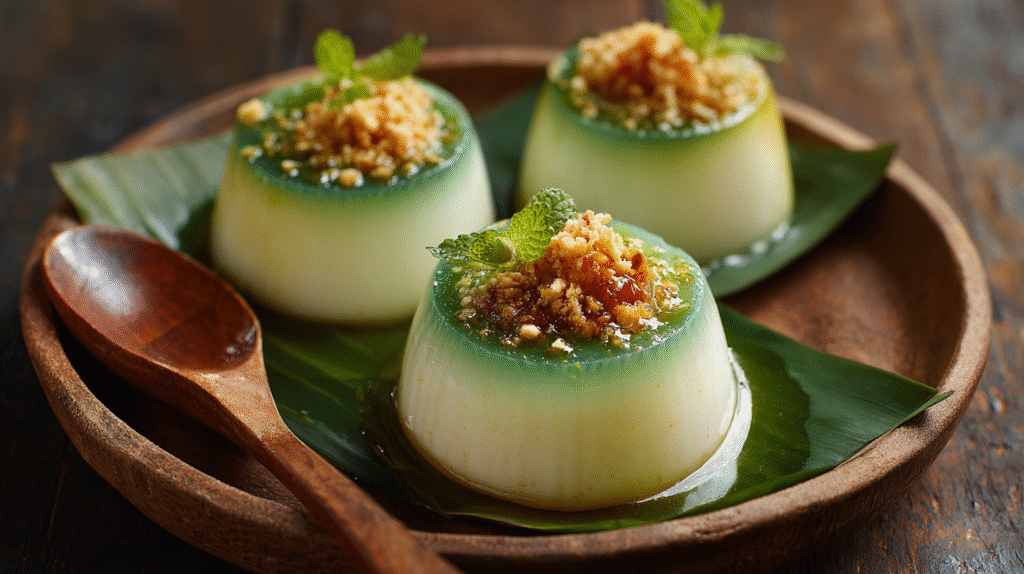
Let’s dive into one of the most iconic Vietnamese desserts, Chè Bắp (Sweet Corn Pudding). This dessert perfectly balances the sweetness of corn and coconut, served either warm or chilled. Follow these steps to create this comforting treat at home.
Ingredients
- 1 cup sweet corn kernels (fresh or frozen)
- 4 cups water
- 1/2 cup glutinous rice, rinsed
- 1/4 teaspoon salt
- 1/2 cup coconut cream
- 4 tablespoons sugar
- 1 tablespoon tapioca starch mixed with 3 tablespoons water (optional for thickening)
- Toasted sesame seeds or crushed peanuts (for garnish)
Instructions
- Cook the Rice
In a medium pot, combine rinsed glutinous rice and 4 cups of water. Bring it to a gentle boil over medium heat. Stir occasionally to prevent sticking. Let it cook for about 15-20 minutes until the rice softens and expands.
- Add the Corn
Add the sweet corn kernels to the pot of cooked rice. Stir gently and let it simmer for another 10-12 minutes until the corn is tender. If using frozen corn, you may need slightly less time.
- Sweeten the Pudding
Mix in the sugar and salt while the mixture simmers. Adjust sweetness to taste as sugar levels vary by preference. Stir until dissolved completely.
- Incorporate the Coconut Cream
Pour in the coconut cream and mix well. Let it simmer for an additional 5 minutes, allowing the flavors to meld beautifully. The dessert should have a creamy texture. If you prefer it thicker, add the tapioca starch mixture and stir until the pudding thickens.
- Serve and Garnish
Ladle the Chè Bắp into bowls. Garnish with a sprinkle of toasted sesame seeds or crushed peanuts. Serve warm for a comforting dessert or chilled for a refreshing treat.
Ingredients
In Vietnamese desserts, the ingredients play a vital role in creating the distinct flavors and textures we all love. Let’s explore the key components that bring these desserts to life.
Base Ingredients
- Tapioca Pearls: 1/2 cup, soaked for 30 minutes to soften. Essential for desserts like Chè Chuối, these pearls create a chewy texture.
- Tapioca Starch: 1/4 cup, used to form delightful ‘rubies’ in Chè Thái.
- Coconut Milk: 1 cup, for a creamy and rich base in desserts like Chè Chuối.
- Coconut Cream: 1/2 cup, thicker and richer, often added for extra indulgence.
- Half and Half: 1/2 cup, a blend of whole milk and heavy cream, sometimes used in Chè Thái for the sauce’s velvety texture.
- Glutinous Rice: 1/2 cup, soaked, perfect for pudding-like desserts such as Chè Bắp.
Sweet Fillings and Toppings
- Sweet Corn Kernels: 1/2 cup, fresh or frozen, they add natural sweetness and texture to Chè Bắp.
- Bananas: 2 ripe bananas, sliced, a star ingredient in Chè Chuối.
- Assorted Fruits: 1 cup, a mix of longan, rambutan, jackfruit, and lychee, peeled and diced, perfect for Chè Thái’s medley of flavors.
Garnishing Ingredients
- Toasted Sesame Seeds: 2 tablespoons, for crunchy and nutty notes on Chè Bắp.
- Crushed Peanuts: 2 tablespoons, roasted and sprinkled on top for an earthy aroma.
- Fresh Pandan Leaves: A few strands, tied in a knot, for a subtle fragrance while cooking coconut milk.
Tools And Equipment
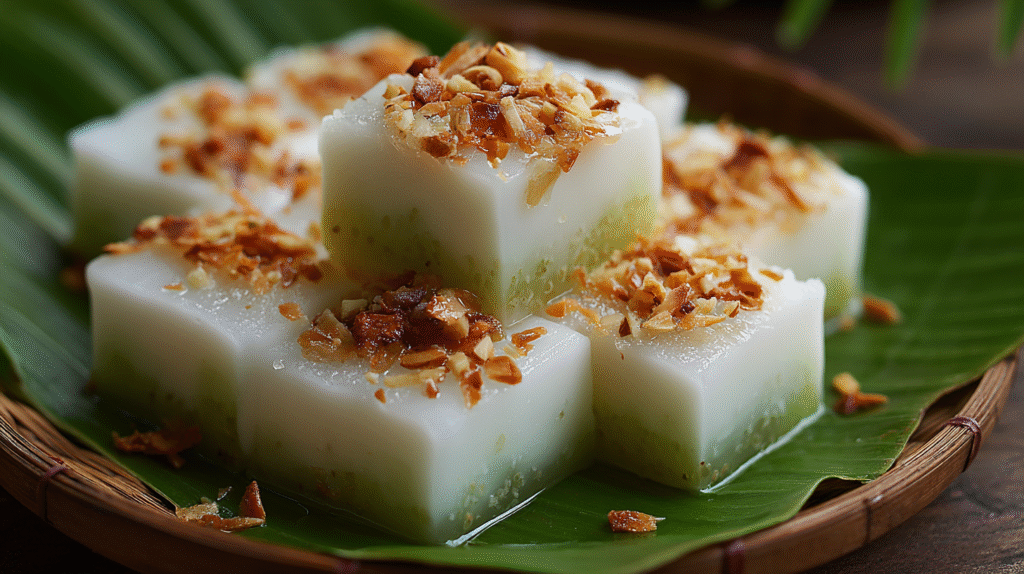
Preparing Vietnamese desserts requires a selection of tools and equipment that help us achieve the right textures and flavors. From cooking to serving, having the right items makes the process smoother and more enjoyable.
Cooking Tools
To create Vietnamese desserts, we rely on versatile kitchen tools. These include:
- Saucepan or Pot: For cooking ingredients like tapioca pearls or simmering coconut milk.
- Steamer: Essential for steaming sticky rice or beans.
- Fine Mesh Strainer: Useful for rinsing mung beans or straining tapioca pearls.
- Wooden Spoon or Silicone Spatula: Ideal for stirring delicate mixtures like Chè.
- Measuring Cups and Spoons: Ensure precise measurements for ingredients like palm sugar and coconut milk.
- Blender: Handy for pureeing fruits or making smooth coconut cream when needed.
These tools support us in achieving the perfect consistency for everything from sweet soups to creamy puddings.
Serving Tools
Presenting Vietnamese desserts beautifully enhances the eating experience. For this, we use:
- Small Bowls or Glasses: Perfect for serving individual portions of Chè or layered treats like Che Ba Mau.
- Ladles: To portion desserts like Chè into bowls without spilling.
- Spoon Sets: Used for enjoying the delicate layers of jellies and beans in desserts.
- Cooling Racks: If desserts need to cool down before serving, like coconut jelly.
- Garnish Tools: Small tongs for placing toasted sesame seeds or pandan leaves precisely.
Directions
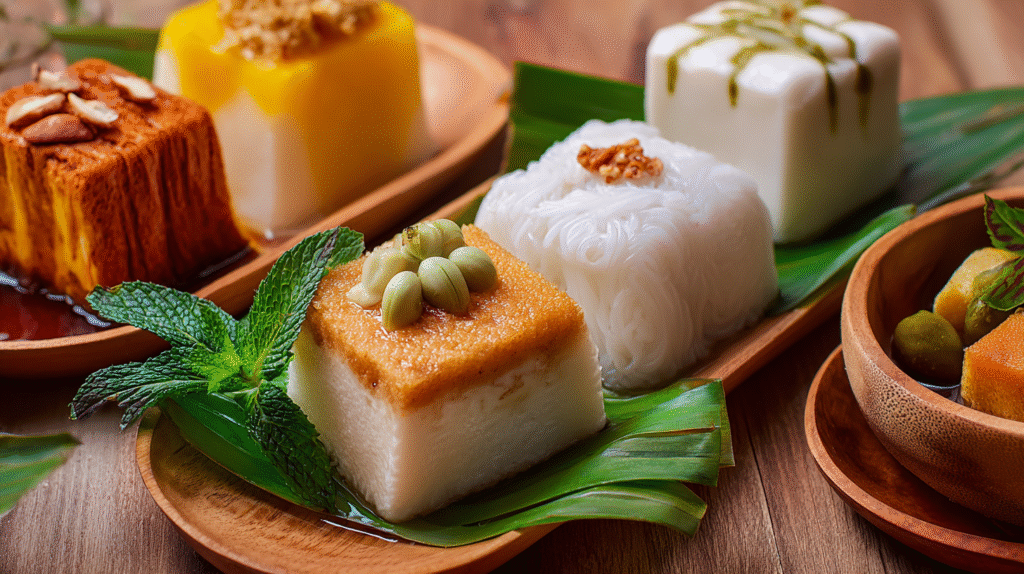
Let’s dive into creating one of Vietnam’s most delightful desserts, Chè Thái, known for its vibrant colors and refreshing flavors. Follow these straightforward steps to prepare, cook, and assemble this fruity treat.
Prep
- Cut the water chestnuts into small, equal-sized cubes for uniform cooking.
- Add 2-3 drops of red food coloring to the water chestnuts and stir until evenly coated, giving them a bright ruby-like appearance.
- Coat the colored water chestnuts thoroughly with tapioca starch, ensuring an even layer. Shake off any excess starch to prevent clumping.
Cook
- Bring a pot of water to a rolling boil over high heat.
- Drop the prepared water chestnuts, or “rubies,” into the boiling water. Cook them until they float to the surface, which should take about 5-7 minutes.
- Using a slotted spoon, transfer the cooked rubies immediately to an ice bath. Let them chill for 10 minutes to firm up their chewy texture.
- Drain the rubies and set them aside for assembly.
Assemble
- Open all the canned fruits, including longan, rambutan, coconut jelly, aiyu jelly, toddy palm seeds, and jackfruit. Drain the syrup from all fruits except the longan and set them aside.
- In a large mixing bowl, combine the chilled rubies with the drained canned fruits.
- Gradually add condensed milk to sweeten the mix—start with 1/2 cup and adjust according to your taste preference.
- Pour in 2 1/2 cups of half and half (a mix of whole milk and heavy cream) into the fruit mixture, stirring well to ensure everything is evenly distributed.
- Cover the bowl and refrigerate for 2-3 hours, allowing the flavors to meld and the dessert to chill.
- Serve over crushed ice for a refreshing and indulgent experience.
Tips For The Perfect Vietnamese Dessert

Creating Vietnamese desserts at home can be a delightful experience when you pay attention to key details. From preparation to storage, a little extra care ensures the best flavors and textures in every bite.
Make-Ahead Options
Planning ahead is essential for enjoying Vietnamese desserts stress-free, especially for gatherings or busy days. Many desserts, like Chè Thái and Chè Bắp, can be partially made in advance to save time. For instance:
- Cook tapioca pearls or glutinous rice a day earlier and refrigerate them in an airtight container. Add a splash of water when reheating to prevent them from drying out.
- Prepare coconut cream and sweetened syrups ahead of time and store them separately to preserve their freshness.
- For multilayered desserts such as Bánh Da Lợn (Steamed Layer Cake), you can prepare the batter ahead and steam the layers when you’re ready to serve.
Making ahead not only cuts down preparation time but also allows time for ingredients like pandan or coconut milk to infuse deeper flavors.
Storage Tips
Proper storage is key to maintaining the flavor, texture, and quality of Vietnamese desserts. Follow these tips to keep your treats fresh:
- Refrigerate Desserts: Store desserts like Chè Bắp or Chè Thái in airtight containers in the refrigerator. They typically last 2 to 3 days when chilled, though textures, like tapioca pearls, might slightly harden.
- Separate Components: For desserts with multiple textures or liquid components, such as jellies and syrups, keep ingredients separate until serving. This prevents sogginess and preserves texture.
- Freeze Smart: Some items, like pandan honeycomb cakes (Bánh Bò Nướng), freeze well. Wrap them tightly in plastic wrap and place them in a freezer bag. Thaw them at room temperature and reheat in a low oven for a fresh taste.
Other Popular Vietnamese Desserts To Try
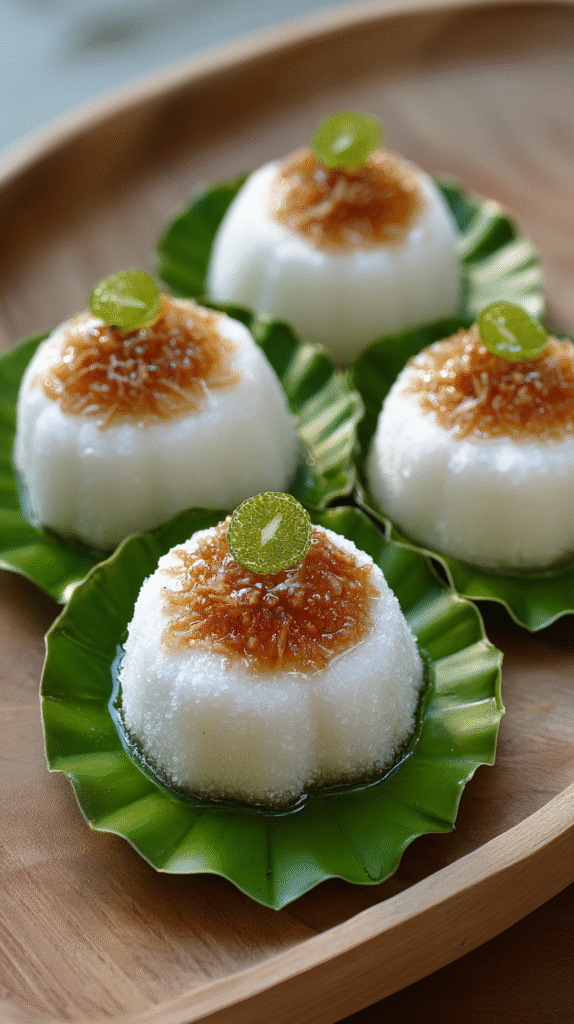
Vietnamese cuisine offers an enticing array of desserts that captivate us with their unique flavors and textures. Here are some favorites that would delight any dessert enthusiast:
Banh Chuoi (Banana Cake)
This versatile treat comes in three delightful forms: baked, steamed, or fried. The moist and dense texture, combined with the rich flavors of ripe bananas and coconut milk, makes it truly irresistible. To make this at home, we would need:
-
Ingredients:
- 4 ripe bananas (mashed or sliced)
- 1 cup coconut milk
- 1 cup rice flour
- 1/4 cup sugar (adjust to taste)
- A pinch of salt
- Optional toppings: sesame seeds or shredded coconut
-
Steps:
- Mix bananas with coconut milk, sugar, and salt in a bowl.
- Gradually fold in rice flour until the mixture forms a smooth batter.
- Choose your method:
- For baking: Pour the batter into a greased loaf pan and bake at 350°F for 40-45 minutes, until golden and set.
- For steaming: Transfer batter to a heatproof dish, then steam for 25-30 minutes.
- For frying: Spread batter onto small banana leaf pieces and fry in hot oil until crispy.
- Serve warm or chilled, topped with sesame seeds or shredded coconut.
Banh Flan (Creme Caramel)
This creamy custard with a luscious caramel layer embodies the fusion of French and Vietnamese flavors. Here’s how to prepare it:
-
Ingredients:
- 5 large eggs
- 1 1/2 cups milk (whole or coconut milk)
- 1/2 cup sugar (divided)
- 1 tsp vanilla extract
-
Steps:
- Prepare caramel by melting 1/4 cup sugar in a pan until golden brown. Quickly pour into ramekins and swirl to coat the base.
- In a bowl, whisk eggs with the remaining sugar. Add milk and vanilla, stirring gently to avoid bubbles.
- Strain the mixture and pour into the caramel-coated ramekins.
- Place ramekins in a water bath and bake at 325°F for 45-50 minutes, until the custard sets.
- Let cool, then refrigerate. To serve, invert onto a plate to reveal the glossy caramel layer.
Che Ba Mau (Three-Colored Dessert)
This vibrant dessert excites our senses with its colorful layers and refreshing taste. It’s a perfect sweet treat for warm days:
-
Ingredients:
- 1/2 cup cooked red beans (sweetened)
- 1/2 cup mung bean paste (made by boiling and mashing mung beans with sugar)
- 1/2 cup green pandan jelly (store-bought or homemade)
- 1 cup coconut milk (sweetened slightly with sugar or condensed milk)
- Crushed ice
- Assemble the dessert in a tall glass, layering red beans at the bottom, followed by mung bean paste, and green pandan jelly.
- Add a generous amount of crushed ice on top.
- Pour sweetened coconut milk over the layers.
- Serve with a spoon and a straw, allowing layers to mix as you eat and drink this refreshing dessert.
Conclusion

Vietnamese desserts bring a wonderful mix of flavors, textures, and cultural heritage to our kitchens. From the comforting sweetness of Chè Bắp to the vibrant and refreshing Chè Thái, there’s something for everyone to enjoy. These recipes not only satisfy our sweet cravings but also give us a glimpse into the heart of Vietnamese culinary traditions.
By experimenting with tropical ingredients and using the right tools, we can recreate these delightful treats at home with ease. Whether we’re serving them warm or chilled, these desserts are sure to impress and bring joy to any occasion. Let’s keep exploring and sharing the magic of Vietnamese sweets!
Frequently Asked Questions
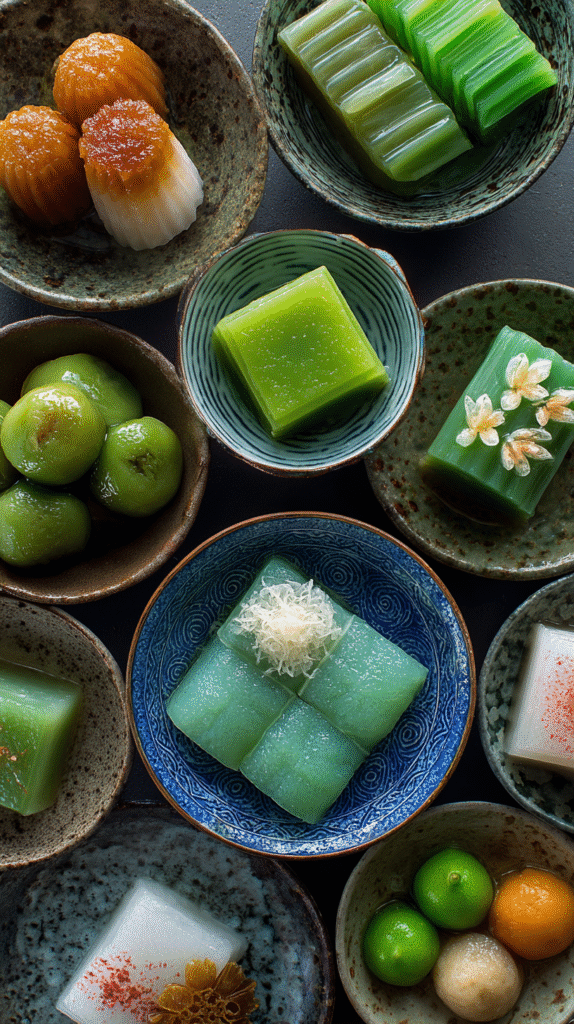
What are some popular Vietnamese desserts highlighted in the article?
The article highlights popular desserts such as Chè Bắp (Sweet Corn Pudding), Chè Thái, Bánh Chuối (Banana Cake), Bánh Flan (Creme Caramel), and Chè Ba Màu (Three-Colored Dessert). Each dessert reflects Vietnam’s rich culinary heritage with unique flavors and textures.
What are the key ingredients used in Vietnamese desserts?
Key ingredients include coconut milk, tapioca pearls, pandan, glutinous rice, mung beans, and tropical fruits like bananas. These components create the signature flavors and textures of Vietnamese desserts.
How can I make Chè Bắp (Sweet Corn Pudding) at home?
To make Chè Bắp, cook glutinous rice with water, add sweet corn, sweeten with sugar, and finish with coconut cream. Optional garnishes include toasted sesame seeds or crushed peanuts. It can be served warm or chilled.
What tools do I need to prepare Vietnamese desserts?
Essential tools include saucepans, steamers, fine mesh strainers, blenders, and serving tools like small bowls and ladles. These items help achieve the perfect textures and presentation.
What is Chè Thái and how is it made?
Chè Thái is a colorful and refreshing dessert made with water chestnuts, canned fruits, condensed milk, and half and half, served over crushed ice. It’s a light and indulgent treat for warm days.
Can I make Vietnamese desserts ahead of time?
Yes, many components like tapioca pearls, glutinous rice, and coconut cream can be prepared in advance. Store them in airtight containers or refrigerate to maintain quality and texture.
How should I store Vietnamese desserts?
Refrigerate desserts in airtight containers and keep their components separate to maintain texture. Some desserts, like pandan cakes, can also be frozen with proper wrapping.
What makes Vietnamese desserts unique?
Vietnamese desserts stand out for their delicate balance of sweetness, use of tropical ingredients like coconut and pandan, and their variety of textures, from chewy to creamy to refreshing.
Are Vietnamese desserts overly sweet?
No, Vietnamese desserts are known for their subtle and refreshing sweetness, making them a light and enjoyable option compared to other overly sweet treats.
Can I find vegetarian or vegan-friendly Vietnamese desserts?
Yes, many Vietnamese desserts are naturally vegetarian, and some, like Chè Bắp and Chè Thái, can easily be made vegan by using plant-based ingredients such as coconut milk.
